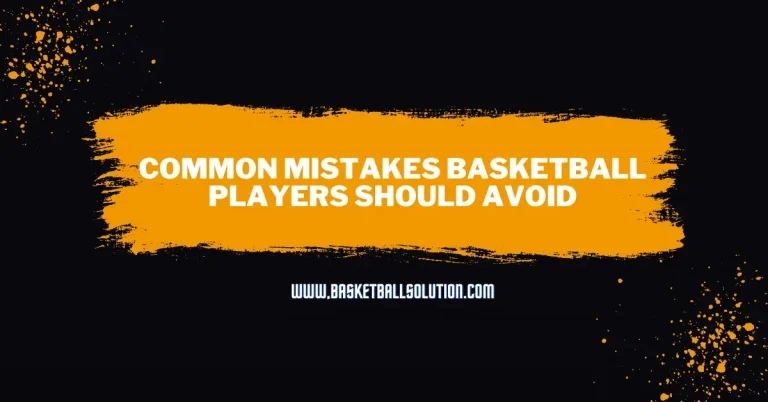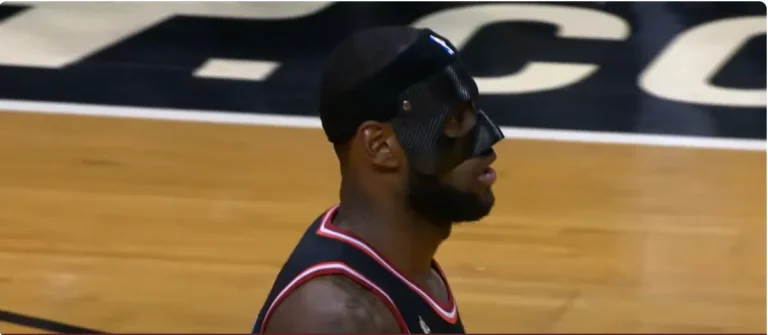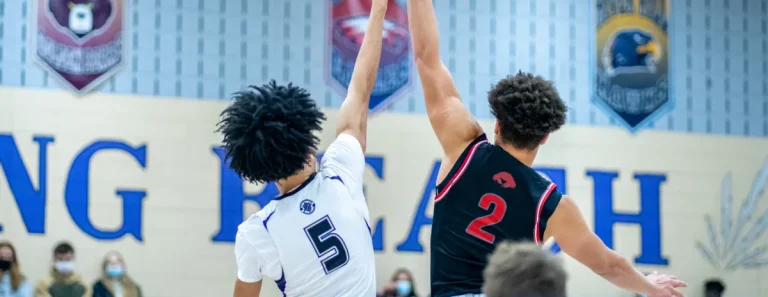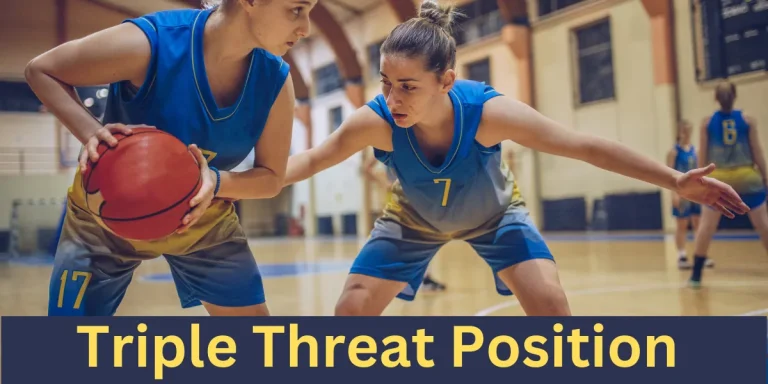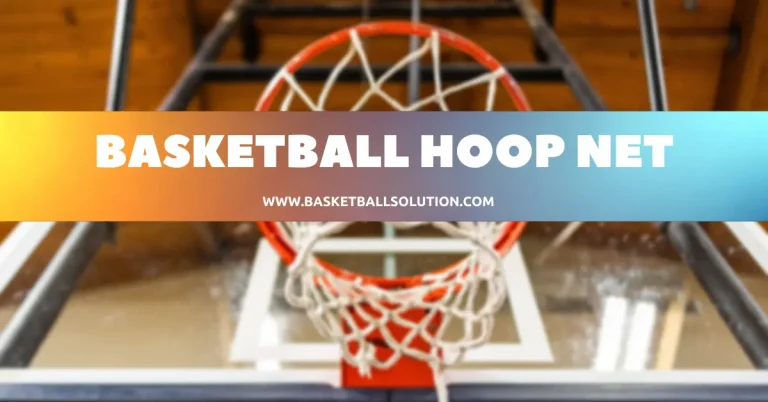NBA 5 Second Basketball Rule | 4 Types Violation
Hey there, have you ever heard of the 5 Second Basketball Rule? No, it’s not about dropping snacks on the court, but it’s a game-changer that keeps the action moving. Whether you’re a player, a coach, or just a fan, understanding this rule is key to unlocking the strategy behind the game. So, let’s dive in and explore what the 5 Second Rule/Violation is all about and why it’s such a big deal in basketball.
What is the 5 Second Basketball Rule?
The 5 Second Rule in basketball is a crucial regulation that dictates how long a player can hold the ball without taking action. Specifically, when a player is closely guarded by an opponent, they have only five seconds to pass, dribble, or shoot the ball. If they fail to do so within this time frame, it results in a violation, and possession of the ball is awarded to the opposing team. This rule aims to prevent stalling tactics and promote continuous gameplay, adding an element of urgency and strategy to the sport.
Basketball Five Second Violation
In basketball, the five-second violation is a rule designed to prevent players from holding the ball for too long without taking action. When a player has the ball, they have a limited amount of time to pass, dribble, or shoot. If they fail to do so within five seconds, it results in a turnover, and the opposing team gains possession.
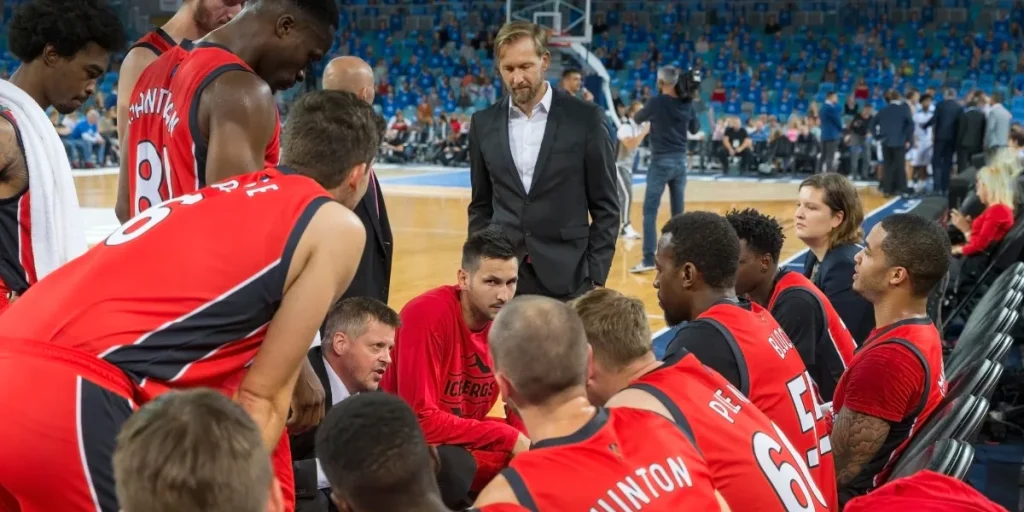
1. Out-of-Bounds or Throw-In Violation
The first variation, the Five-Second Out-of-Bounds or Throw In Violation, mandates that when a player is inbounding the ball, they must release it within five seconds. This rule has been a part of basketball since its inception, dating back to the original 13 basketball rules established in 1891. Incurring this violation results in a turnover, with the opposing team gaining possession at the free throw line extended. This rule applies across all basketball formats, including the NBA, NCAA, and other leagues.
2. Back to the Basket Violation
Moving on, the Five-Second Back to Basket Violation is specific to NBA players. It prohibits them from facing away from the hoop while dribbling below the extended free-throw line for more than five seconds. Introduced in 1999, this rule aimed to address certain players’ dribbling styles. Penalties for this violation include a turnover, with the opposing team gaining possession out of bounds at the free throw line extended. Notably, this rule applies solely to the NBA and does not extend to NCAA games.
3. Closely Guarded Violation in NCAA
Another variation, the Five-Second Closely Guarded Violation, dictates that a defender must be within six feet of the offensive player for five seconds without the offensive player passing, shooting, or dribbling. Established in 1930 and modified over the years, this rule aims to prevent offensive stalling tactics. Penalties for this violation result in a turnover, with the opposing team gaining possession nearest to the violation spot. Interestingly, this rule applies primarily to NCAA games, with variations in high school and NCAA women’s rules.
4. Free Throw Violation
Lastly, the Five-Second Free Throw Violation is specific to FIBA (International Basketball Federation) games. Players have five seconds to shoot a free throw after the official places the ball. While the exact creation date of this rule remains unclear, it has long been a part of basketball regulations. Penalties for this violation include the nullification of the point if successful, with the opposing team gaining possession from the sideline at the free throw extended. It’s worth noting that both the NBA and NCAA have a 10-second version for free throw violations, differing from the FIBA standard.
What is the 5 Second Rule in the NBA?
The 5-second rule in the NBA pertains to a violation that occurs when an offensive player holding the ball fails to initiate significant action within five seconds. This can include dribbling, shooting, or passing.
The rule aims to prevent stalling and promote active gameplay. If a player holds the ball for more than five seconds without taking decisive action, it results in a turnover, and the opposing team gains possession of the ball.
This rule encourages players to make quick decisions, maintain ball movement, and prevent defensive tactics that could lead to stalling the game. It’s an essential aspect of maintaining the dynamic flow of NBA basketball.
List of NBA Basketball Violations
In basketball, various violations occur during gameplay, each carrying its specific consequences. Here’s a list of common basketball violations:
Traveling: This occurs when a player moves their pivot foot or takes too many steps without dribbling the ball. Results in a turnover, with possession awarded to the opposing team.
Double Dribble: This happens when a player dribbles the ball with two hands simultaneously or resumes dribbling after stopping. Results in a turnover, with possession awarded to the opposing team.
Charging: This occurs when an offensive player initiates contact with a defender who has established a position. Results in a turnover, with possession awarded to the defending team.
Blocking: This happens when a defensive player impedes the progress of an offensive player without establishing a legal guarding position. Results in a foul, with the offensive player awarded free throws if in the bonus.
Goaltending: Occurs when a defensive player interferes with a shot on its way down toward the basket, or when a player touches the ball while it’s on or above the rim. Results in points being awarded to the offensive team.
Holding: This happens when a player holds onto an opponent to impede their movement. Results in a foul, with the opposing team awarded free throws if in the bonus.
Illegal Screen: Occurs when a player sets a screen without establishing a legal position or moves while setting the screen. This results in a foul, with possession awarded to the opposing team.
3 Second Violation: Happens when an offensive player remains in the key (restricted area) for more than three seconds. Results in a turnover, with possession awarded to the opposing team.
24-Second Shot Clock Violation: Occurs when a team fails to attempt a shot within 24 seconds of gaining possession. Results in a turnover, with possession awarded to the opposing team.
Backcourt Violation: Happens when a team advances the ball into the backcourt after it has already crossed the half-court line, and then the team attempts to bring the ball back into the frontcourt. Results in a turnover, with possession awarded to the opposing team.
Understanding and adhering to these violations are essential for players, coaches, and officials to ensure fair and competitive gameplay.
FAQs
Can you hold the basketball for more than 5 seconds?
Certainly, in basketball, on an inbound pass, a player may only hold the ball for a maximum of 5 seconds. If a player is closely guarded and fails to start dribbling, passing, or attempting a shot within this time, it results in a violation, and the opposing team is awarded an inbound pass.
Is there an 8-second rule in basketball?
In basketball, a team can’t possess the ball in its backcourt for over 8 seconds continuously. Exceptions include defense kicking or fouling, leading to a new 8-second count.
Conclusion
When it comes to basketball, the way the 5-second rule is enforced varies between the NCAA and the NBA, and it’s all about their unique styles. The NCAA is pretty strict about it, aiming for a faster game. On the flip side, the NBA gives players more time, allowing for extra creativity. Now, here’s the thing – there’s also the three-second rule, adding another layer to the game. It raises questions about how the NBA should handle it. Should they lean towards more turnovers and a quicker pace, or should they prioritize showcasing individual skills and creativity? It’s a bit of a basketball conundrum. What are your thoughts on this? Share them below!

Passionate basketball player striving for excellence on and off the court. Dedicated to the game since youth, I have honed skills through years of practice. Explore my journey, gear reviews, and dunking tips. Let’s elevate our game together!


